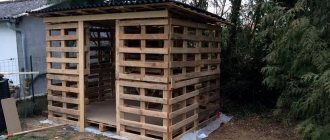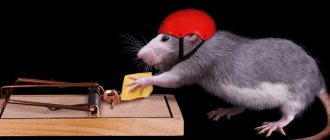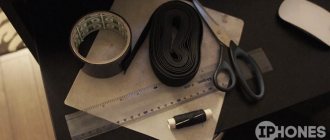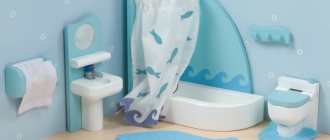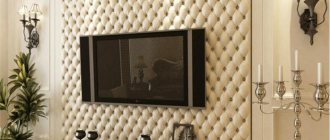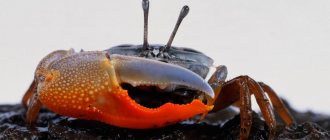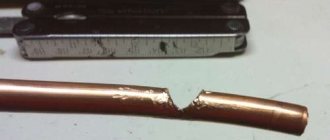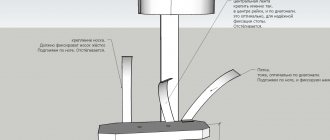An aquarium without a filter is a mockery of its inhabitants. Every self-respecting aquarist takes care of everything: the size of the reservoir, the compatibility of the fish, the condition of the water. Maintaining the necessary balance in the pool is ensured by equipment: filters and aerators. These are the devices that need to be purchased first. But the cost of these devices sometimes exceeds the cost of the aquarium itself. Therefore, it makes sense to make a homemade external filter yourself.
An external filter is convenient because its design does not steal the useful volume of a home pond. It is easier to care for. It can be integrated into the interior as an integral part or, on the contrary, hidden from view.
How to make it yourself
The cleaner is created from scrap materials that are sold in hardware stores. One device is used in containers up to 500 liters. For a larger aquarium, two units are needed. Before manufacturing, it is worth understanding the principle.
How does it work
Homemade external aquarium filters provide biological filtration. Cleansing takes place according to the following scheme:
- Water is pumped through a tube using a pump.
- In the device, liquid passes through filter parts. Bacteria convert ammonium into nitrates.
- Clean water returns through the outlet tube.
After starting, the filter works like a mechanical one, after 2–4 weeks the number of beneficial bacteria inside the filler increases, and natural cleaning of the aquarium environment occurs.
Necessary materials
To design an external filter, you will need:
- base (bottle or canister);
- material for filter cassettes (plastic pots);
- hoses or flexible pipes;
- electric pump;
- fitting;
- padding polyester or cotton wool;
- foam sponge.
For an aquarium with a volume of 100 liters, a plastic bottle is suitable, for spacious vessels - a canister or a plumbing pipe with plugs. The material for filter cassettes can also be a kitchen mesh, a vegetable drawer or a container of suitable diameter. New components are purchased, since the old ones contain toxins accumulated during operation. Materials must be non-toxic. Metal elements without lubrication and protected from direct contact with water are suitable. It is better to choose hoses that are durable and without kinks.
Filling options
The most common and affordable materials for filling an aquarium filter system are padding polyester and foam rubber. They are able to take any form and also act as mechanical and biological filters. The pores of these materials provide enough space for bacteria to spread. It is necessary to periodically rinse the filler to get rid of mucus that clogs the filter system. In addition, silt can settle in the pores, which should not be inside the filtration system, interfering with its operation. There are several options for filling external aquarium filters:
- Filter wool is a budget-friendly filler that is suitable for repeated use. It is easy to clean, with its help the filter space is filled quite tightly, which eliminates the possibility of leakage. It is the best option for use at the final stage of cleaning.
- Ceramic rings are used to uniformly distribute water flows, which ensure the transport of oxygen to the bacteria.
- Plastic bio-balls. Their movement in the water promotes uniform washing of all filter materials. It should be noted that this filler can be used as a substrate to support the vital activity of bacteria.
You can fill the aquarium with various materials
- Sintered glass. The most convenient option is to purchase the material in the form of balls. A special baking technology promotes the formation of pores in products. The latter contain beneficial microorganisms that process nitrites and nitrates. The efficiency of glass is significantly higher than that of other materials used for biological treatment.
- Ceramic tubes are used to breed bacteria in small pores.
- Zeolite is a low-cost, but very effective sorbent that quickly absorbs an element such as ammonium from water. With its help you can get rid of nitrates in the aquarium.
- Activated carbon. Many experts argue about the advisability of using this material for cleaning aquariums. Some people tend to think that it is better to use small granules for filters. It should be noted that they should have many pores, because this indicator affects the absorption efficiency. In addition, the quality of the material can be determined by the presence of characteristic shine and special dust. Before placing material into the filter system, it must be thoroughly rinsed.
- Peat is a natural material for filtration systems. It is affordable, successfully copes with many tasks - it reduces the Ph level, slows down the growth of fungi, and has a positive effect on the inhabitants of the aquarium.
All of the above fillers can be found on the shelves of pet stores.
Other models
In addition to external filters, there are other filters for aquariums.
Airlift
Such devices purify water using air. They are gradually losing their popularity due to low efficiency. Inexpensive, they can be made at home. You can make an air filter from a plastic tube. At the upper end there is a square that supplies water. A hose is inserted at the bottom of the tube, on which a sponge is placed.
Mounted
For a small aquarium, you can make a hanging filter with your own hands. A glass or plastic container in which partitions are made is suitable for manufacturing. The first compartment contains padding polyester, the remaining compartments are filled with filter media. Water is supplied by a compressor.
Types of aquarium internal filters
Devices can be divided according to their filtering capabilities. The simplest glasses carry out only mechanical cleaning of the water and partly biological. Accordingly, they are the cheapest.
In some models, the number of sections for installing filter material is increased, which also allows for chemical water purification using activated carbon or zeolite.
Internal filters also differ in their performance, that is, in the volume of water that is pumped through the system per unit of time. It should be noted right away that a 300-liter capacity is the fundamental limit for the technical devices under consideration.
As a rule, the pump on the internal purifier is attached to the top of the glass, but there are models where it is located at the bottom.
There are modern devices that have additional options, for example:
- built-in water heater to maintain the temperature in the aquarium;
- injector for supplying air with water;
- pump power regulator and indicator;
- flow direction switch and others.
Of course, additional devices and options are reflected in the price of the device.
How to care
It is necessary to carefully monitor the operation of the equipment: filtration occurs without interruptions and leaks. As pollution occurs, the power decreases and the water pressure weakens. Filter sponges are periodically checked and replaced with new ones when worn out.
Cleaning
The filter device must be washed with water taken from the aquarium to prevent disturbance of the bacterial environment. The filler is washed with extreme care. Thorough rinsing is detrimental to beneficial bacteria.
A complete flush is carried out every six months.
Criterias of choice
There are several signs that you need to pay attention to first when choosing a filter. Let's look at them in detail.
By filtration type
There are three main methods of water filtration.
These include:
- Mechanical method. Cleaning is carried out using a filler through which water passes, leaving all suspended pollutants in the pores of the material. The material can be a sponge or even a bundle of fishing line. This type is suitable for unpretentious dirty fish - cichlids and goldfish.
- Biological. It is carried out using objects or fillers coated with a film of beneficial bacteria that break down organic matter. Ideally, colonies of microorganisms will be taken from this particular aquarium that is being cleaned.
- Chemical. Sorbents are used, most often activated carbon. This material absorbs phosphates, nitrates, and other mineral and organic solutes.
All these methods are simultaneously used only by a canister external filter. Other devices are based on the use of only one of the above methods.
In terms of power and performance
Power and productivity show how much liquid the filter can push through in one hour. On the device and the box in which it is sold, a number is always indicated, 300, 500, 1000 liters per hour and the like. However, it must be taken into account that this indicator is established in the laboratory using perfectly clean, in some cases even distilled, water.
Therefore, do not be surprised that the actual power will be less than that declared by the manufacturer. Because of this, it is recommended to choose a product that is an order of magnitude more powerful. Experienced aquarists advise choosing a device with a strong overstatement. For example, for a capacity of 100 liters, take a filter with a capacity of 1000 liters per hour.
By installation method
According to the design format, three large groups are distinguished.
Types of filters by installation method:
- External, located on the side or back wall of the aquarium. An external aquarium filter is most often used for very large tanks.
- Internal, always consists of a pump and a glass.
- Canister. It is so large that it can only be placed on the floor or inside an aquarium cabinet.
- Bottom, which looks like a complex interweaving of tubes located at the bottom of the tank.
Most often, for a small container, one internal filter is enough.
According to filler material
Fillers are more relevant for devices based on the mechanical filtration method.
The most popular fillers:
- Sponge. It is cheap, relatively durable, and absorbs mechanical debris well. After a week, beneficial bacteria settle in the pores of the sponge, and it becomes a kind of biofilter. However, this material must be washed once every two to three weeks so as not to contribute to the proliferation of harmful microorganisms.
- Activated carbon. When shaken, it can return all the substances accumulated over a long time back into the water, which will kill your pets. Therefore, it needs to be changed frequently. Very effective in chemical cleaning.
- Multiporous ceramics. It is a kind of biofiller, because beneficial microorganisms settle in the pores of the ceramic.
The best option in terms of price/quality ratio, however, is ceramics.
By price
You need to focus on price, but a more reliable indicator of quality is the country of origin. For example, Chinese devices developed by American engineers are not inferior in quality to German “average” ones.
By price category, brands are divided into three groups:
- Inexpensive: Chinese Atman, Resun. On average they cost up to 4 thousand rubles.
- Average in cost: JBL, Sera, Hagen, Tetra (Germany), Aquael (Poland), Ferplast, Hydor (Italy). The brands are of European origin, but the assembly is still Chinese. They cost about 6-8 thousand rubles.
- Expensive. Thanks to high quality and reliability, the German company Eheim earned this title. The average price is 13-14 thousand rubles for a 120 liter filter.
If you are a beginner, know that it is better not to rely on expensive equipment, but to gain experience. No filter, even the most reliable one, can replace human care.
By manufacturer
One brand can produce products of different price categories, but this only affects its quality and popularity for the better. Therefore, we highly recommend researching the best brands before heading to the store.
Here is our short review of the best manufacturers:
- The ideal option in terms of price/quality ratio is Aquael UNIMAX.
- The best silent devices are offered by the German leader - Eheim.
- The latest biopurification technologies will be offered by the very popular German brand Tetra in our country.
- A Chinese dark horse that is gradually gaining worldwide fame is HAILEA. The devices are very cheap, but their maintenance will require more time.
- Inexpensive canister water purifiers of excellent quality are offered by the Italian company Hydor.
So far, manufacturers from Germany, Poland and Italy enjoy the greatest confidence among aquarists.
Common mistakes
- When assembling the external filter, the component elements are not properly sealed, which increases the likelihood of a leak. Do not skimp on the sealant when gluing.
- Neglecting to check leaks or not taking enough time to identify defects can lead to leaks. The adhesive curing time and conditions must also be fully observed.
- Lack of pump power will not provide the necessary filtration of spacious containers. For an aquarium with a volume of 100 liters, a pump with a capacity of 500 l/h or more is suitable.
If you have doubts about your skills, it is better to buy a ready-made external filter. Poorly made equipment will cause a lot of problems for the aquarist and the fish.
Previous
AquariumHow to make the best nutrient soil for plants in an aquarium with your own hands?
Next
AquariumStep-by-step instructions for starting an aquarium from scratch: location, soil, water, fish
Why do you need a biofilter?
There are several types of cleaning. The most common is mechanical, but there are also chemical and biological types. Scientists believe that it is the latter type that is considered the most important and necessary.
This is explained by the fact that in every aquarium there is organic matter left behind by fish and other inhabitants. Decomposition of feces, food residues, plant leaves and gases exhaled by animals provoke the release of ammonia. It poses a huge danger to all living creatures living in the home underwater world.
At a concentration of 0.2 mg/l, ammonia will kill all fish, and for some varieties the dangerous indicator is 10 times less. Accordingly, the aquarist needs to carefully monitor such biological processes and avoid situations where animals may suffer.
Ammonia can be dealt with in various ways. The simplest is regular water changes. They are held weekly, but not more often. Such procedures are very stressful for the inhabitants of the aquarium and, in addition, they can upset the fragile balance of the home ecosystem.
Therefore, the best way to deal with ammonia is through beneficial colonies of bacteria that oxidize it, thus converting it into nitrites and then into nitrates. The latter, of course, in certain concentrations can also cause harm to animals, but they are also a nutrient for natural plants.
This is the principle of biological filtration. It takes place in several stages:
- Fish leave behind waste products;
- Feces, food scraps and leaves decompose, releasing ammonia;
- Bacteria process them;
- The resulting nitrate is absorbed by living plants.
Bacteria independently form in the aquarium during the nitrogen cycle. They live in water, on walls, on decorations. They help maintain the necessary balance, but sometimes it happens that these colonies are not enough, and then ammonia still accumulates, poisoning all the animals. In this case, the task of the aquarist is to multiply microorganisms so that they can cope with high biological loads.
We recommend reading the article: How to choose lighting for an aquarium
